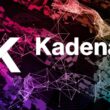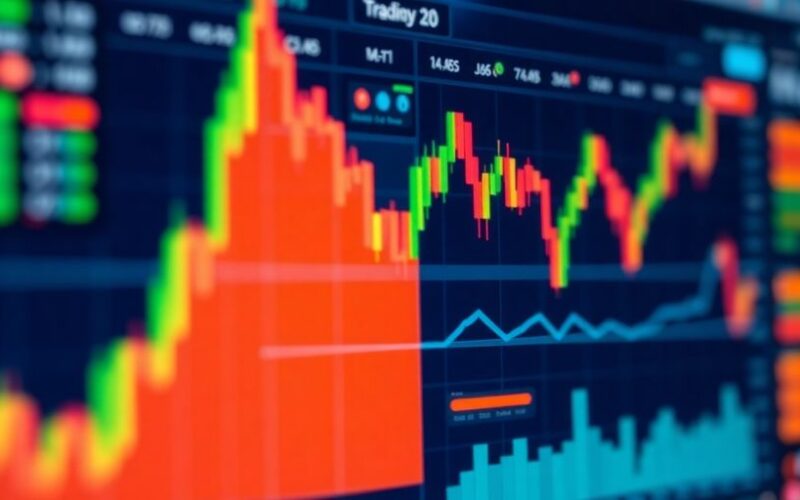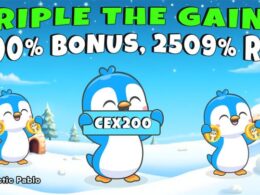The Forex market is huge, like, really huge. Billions of dollars trade hands every day. So, picking the right place to actually make those trades is a pretty big deal. You need something that works, something that’s got the tools you need, and something that doesn’t make you want to pull your hair out. We looked at a bunch of them to figure out the top 10 forex trading platforms for 2025. It’s not always easy, but we tried to make it simpler for you.
MetaTrader 4, or MT4 as most people call it, has been around since 2005, and honestly, it’s still a big deal in the forex world. It’s like that reliable old car that just keeps running. Lots of traders, from folks just starting out to seasoned pros, stick with MT4 because it’s pretty straightforward to use but also has a lot of power under the hood. It’s developed by MetaQuotes, and they’ve kept it updated over the years, which is probably why so many traders still think of it as the standard.
Beginners and experienced traders who want a dependable, customizable platform with strong automated trading capabilities. If you’re looking for a top MT4 broker, consider IC Markets.
MT4 is available in a few different ways: a desktop program, a web version you can use in your browser, and mobile apps. The desktop version is where you get the full experience, letting you download all sorts of custom indicators and trading strategies. The mobile app is super handy for quick trades on the go, though it doesn’t have quite as many analysis tools as the desktop or web versions. The web version has gotten better too, with features like dark and light themes, making it easier to find and add symbols to your charts.
MetaTrader 5, often called MT5, is the next step up from the super popular MetaTrader 4. It’s not just a minor update, though; it really expands what you can trade. While MT4 was mostly about Forex, MT5 lets you get into stocks, futures, and even cryptocurrencies, which is pretty neat if you want to diversify your portfolio without switching platforms. It comes with more ways to look at charts, giving you 21 different timeframes to play with, compared to MT4’s 9. That means you can really zoom in or out on price action. Plus, it has a built-in economic calendar, so you can keep an eye on market-moving news without leaving the platform. Another big addition is the Depth of Market (DOM) feature, which shows you the order book. This gives you a better idea of where the liquidity is. The backtesting engine is also supposed to be faster and more accurate, which is a big deal for anyone who uses automated strategies.
One thing to remember is that if you have automated trading robots or expert advisors made for MT4, they won’t work on MT5. The programming language is different, so you’d need to get them updated or rewritten. It’s a bit of a hurdle, but the added capabilities of MT5 often make it worth the effort for serious traders.
Experienced traders who want a powerful platform that handles multiple asset classes and offers advanced analytical tools.
TradingView is a really popular platform, especially if you like looking at charts and talking to other traders. It calls itself a “supercharged super-charting platform and social network.” It’s got a huge user base, over 50 million people, which means there’s always someone to bounce ideas off of. It lets you track pretty much every market out there, which is pretty handy.
TradingView is a solid choice if you’re big on technical analysis and like the idea of a social network for traders. The charting tools are top-notch, and the community aspect can be really helpful for learning and sharing. Just remember that for actual trading, you’ll likely need to connect it to a broker, and some of the really advanced stuff requires a paid subscription.
Traders who focus on technical analysis and enjoy interacting with other traders online. If you like digging into charts and discussing strategies, this platform is definitely worth checking out. It’s a great place to get started with charting tools for active traders.
IG Markets is a big name in the trading world, and for good reason. They’ve been around since 1974, which means they’ve got a lot of experience under their belt. They’re also listed on the London Stock Exchange and are regulated by some pretty serious financial authorities like the FCA and ASIC. That gives you a good feeling of security, you know?
What really sets IG apart is the sheer number of things you can trade. We’re talking over 17,000 different instruments. That includes forex, stocks from all over the place, indices, commodities, even crypto. If you want to spread your investments around the globe, IG makes it pretty easy. They’ve got more than 16,000 stocks from different countries, over 100 forex pairs, and a bunch of other stuff like commodities and bonds.
When it comes to platforms, IG has a few options. They have their own IG Web Trader, which I found pretty straightforward to use but still packed with features. You can customize the layout, and it’s got over 100 drawing tools and technical indicators. Plus, they offer MetaTrader 4 and ProRealTime, which are popular choices for many traders. For the really serious folks, there’s L2 Dealer, which gives you direct market access for super-fast pricing and execution. It’s kind of like what their own risk management team uses.
Beginners and traders looking for a wide selection of assets and solid educational materials. IG provides a complete trading solution with superior trading and research tools, alongside top-tier educational resources. Learn more about IG is a good starting point.
While IG offers a lot, it’s worth noting that some users find the spreads a bit higher than on other platforms. Also, if you’re a super advanced trader, you might want to check if their specific tools meet your needs before committing.
eToro really stands out because it’s not just about trading; it’s a whole social experience. You can actually copy what other traders are doing, which is pretty neat if you’re just starting out or don’t have a lot of time. They’ve built a platform that feels more like a community than just a place to buy and sell. It’s got a really simple design, so even if you’re new to all this, you won’t feel totally lost. Plus, they have a bunch of educational stuff, like tutorials and a demo account, so you can practice without risking your own money.
When it comes to what you can trade, eToro has a pretty wide selection. You can trade Forex, of course, but also stocks, cryptocurrencies, and commodities. For US customers, though, it’s a bit different – you can mainly trade crypto and Bitcoin, as CFD trading isn’t available for you there. They don’t have a desktop program, which might seem odd, but it means their web and mobile apps are really well done and easy to use.
Here’s a quick look at some details:
They’ve managed to make trading feel a bit more engaging, almost like a game, while still giving you the tools and information you need to learn. It’s a good spot for people who like a more relaxed approach or are really into crypto.
Some people might find the spreads a bit higher than other places, and there are withdrawal fees to watch out for. Also, if you’re used to MetaTrader 4, you won’t find it here. But for a platform that focuses on community and making trading accessible, eToro is definitely worth checking out, especially if you’re interested in copy trading.
NinjaTrader is a platform that really caters to the more serious trader, especially if you’re into futures and forex. It’s got this reputation for being powerful, and honestly, it lives up to it. You get over 100 technical indicators and drawing tools, which is pretty wild when you start playing around with them. Plus, they have a strategy builder that lets you create automated trading systems without needing to be a coding wizard. It’s used by a huge number of traders, like over 800,000, so you know it’s got some serious backing.
One of the cool things is how customizable it is. You can tweak the interface, indicators, and charts to your heart’s content. They also offer order management and backtesting, which are super important for refining your strategies. If you’re looking to automate your trading, NinjaTrader lets you use something called NinjaScript for that. It’s not exactly beginner-friendly, though; some people find it a bit steep to learn at first.
| Cons |
| Can be difficult to master for beginners |
| Limited customization options compared to some |
While NinjaTrader is a robust platform, its complexity means it might not be the best starting point for absolute beginners. However, for those willing to invest the time, the advanced features and customization can be incredibly rewarding.
BrokerChooser actually gave NinjaTrader a good rating, which speaks to its standing in the trading community.
Thinkorswim, now part of Charles Schwab, is a powerhouse platform that really appeals to traders who like to dig deep into the data. It’s not exactly the simplest thing to get the hang of, especially if you’re just starting out, but once you get past that initial learning curve, it’s pretty amazing what you can do. The charting tools are top-notch, giving you tons of options for technical analysis. Plus, they have this feature called paper trading, which is basically a simulator where you can practice with fake money before you risk your own. It’s a smart way to test out strategies without any real-world consequences.
Thinkorswim really shines when it comes to customization. You can tweak almost everything, from the layout to the hotkeys, making it work exactly how you want it to. For those interested in automated trading, they have a strategy builder that lets you create your own trading plans. And if you’re into coding your own indicators, you can do that too using their thinkScript language.
Here’s a quick look at some of its strengths:
While the platform is incredibly powerful, its complexity means it’s best suited for experienced traders or those willing to invest time in learning its many features. Beginners might find it a bit overwhelming at first.
For managing your account and accessing key trading tools on the go, the Thinkorswim web platform offers a convenient alternative to the desktop version.
cTrader, developed by Spotware Systems, is a trading platform that really stands out for its clean look and how easy it is to use. If you’re someone who likes things to be fast and precise when you trade, this might be the one for you. It’s often seen as a solid alternative to the MetaTrader platforms, especially for traders who appreciate a more modern feel.
| Cons |
| Backtesting capabilities are a bit limited. |
| Not really built for automated trading in the same way some others are. |
cTrader is a great choice for traders who want a platform that feels modern and straightforward. Its focus on market depth and transparent execution makes it appealing for those who are serious about getting good trade fills. If you’re into automated trading, the cBots are a good way to go, though some might find the backtesting tools a bit basic compared to other platforms. It’s a solid option for anyone looking for a reliable and user-friendly trading environment, and many brokers offer cTrader for forex trading.
OANDA is a pretty well-known name in the forex world, especially if you’re trading from the United States. They offer their own platform, OANDA Trade (also called FxTrade), but they also give you access to MetaTrader 4 and TradingView, which is nice for variety. For US traders, they have a single account type, the Spread Only Pricing account. This means you don’t have to mess with calculating separate commissions; it’s all built into the spread. Spreads can start around 0.6 pips, but they often average a bit higher, maybe around 1.2 pips for EUR/USD. It’s not the absolute tightest out there, but the transparency is a big plus.
What’s cool is that OANDA has a rebate program for US customers. If you trade a lot, you can get some money back, like $5 to $15 for every million you trade. They also give you access to a good number of currency pairs – 68 in total, including majors, minors, and exotics. Plus, they’ve got loads of historical data, which is super helpful for backtesting your strategies. For those who like to automate, they offer API access too.
While OANDA is a strong contender, especially for US-based traders, some might find the platform’s complexity a bit much if they’re just starting out. Also, if you’re not in the US, your options might be a bit more limited.
OANDA’s forex trading costs are generally steep, with high effective spreads on both its default and core pricing when compared to leading brokers. This suggests that traders may incur higher expenses when using OANDA’s services.
AvaTrade is a big name in the forex and CFD trading world, and for good reason. They really stand out because they let you pick between fixed or floating spreads, which is pretty neat. Plus, they’ve got some serious regulatory backing, being regulated in places like Ireland, Australia, and Japan. This gives you a good sense of security when you’re trading.
When it comes to what you can trade, AvaTrade doesn’t hold back. You’ve got over 55 currency pairs, a bunch of commodities, indices, cryptocurrencies, and even individual stocks. They also offer leverage up to 1:500, which is quite high and can be a big deal for managing your trades.
AvaTrade offers a few different account types to suit various traders:
AvaTrade is known for offering both fixed and floating spreads. Fixed spreads can be helpful for budgeting your trading costs, while floating spreads often reflect real-time market conditions. Their pricing is generally competitive, especially considering their regulatory status. You can find more details on their spreads for forex trading on their site.
The choice between fixed and floating spreads can really depend on your trading style. If you prefer predictable costs, fixed is the way to go. If you’re okay with costs fluctuating based on market volatility, floating might offer tighter spreads during calm periods.
AvaTrade provides access to several trading platforms:
Customer support is available through various channels, including phone, email, and live chat. They aim to provide assistance to traders across different time zones, which is important for a global market like forex.
So, we’ve looked at a bunch of different Forex trading platforms for 2025. It’s a big decision, and honestly, what works for one person might not be the best fit for another. Think about what you need most – maybe it’s super easy tools for beginners, or perhaps you’re all about fancy charting and fast execution. We tried to cover a good range, from the old reliable ones to newer options with cool features like social trading. Take your time, maybe try out a demo account or two, and pick the platform that feels right for your trading journey. Good luck out there!
The Forex market is where countries trade their money. It’s the biggest money market in the world, with trillions of dollars traded every day. Picking the right trading tool, called a platform, is super important for traders.
We looked at many trading platforms and checked how easy they are to use, what tools they offer for looking at charts and making trades, and if they are safe and trustworthy. We also checked how much it costs to trade and how good their customer help is.
For beginners, platforms like eToro and IG Markets are often good choices because they are easier to understand. For people who have been trading for a while and want more advanced features, MetaTrader 5, NinjaTrader, or Thinkorswim might be better.
Some platforms let you copy trades from other successful traders, which is called copy trading. eToro and TradingView are known for this social trading feature. It’s a neat way to learn and potentially profit.
Yes, many platforms offer demo accounts. These let you practice trading with fake money so you can get comfortable with the platform and learn how to trade without risking your own cash. It’s a great way to start.
The best platform for you really depends on what you need. If you like to trade automatically using computer programs, platforms like MetaTrader 5, cTrader, and NinjaTrader are good for that. If you want to trade different types of money and investments, MetaTrader 5, IG Markets, and AvaTrade are solid choices.







